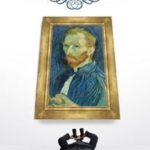Collectible Antique Scientific and Quack Medical Devices
Charles Keller
January 31, 2017
antique scientific equipment, autoclast, betz, coolidge tube, cupping, electronoclast, faradic, galvanic, homeopathy, magneto-electric, mutoscope, polysine, quack medical, radionics, Uncategorized
Six years ago, I researched and cataloged a collection of antique scientific and quack medical devices for Dirk Soulis Auctions, gathered over a span of thirty years by biology professor Dr. Leland Keller (no relation). Dr. Keller used many of these pieces to illustrate lectures on obsolete or quack medical treatments.
In all my years of working as a researcher and writer for auction houses specializing in historical artifacts, this sale remains one of my favorites. Featured here are views of the items laid out for auction, as well as shots from the catalog. I’ve included a link to the full online catalog at the end.
![]() |
| Victor diathermy, circa 1900. Incomplete. |
![]() |
| Dr. Albert Abrams’ Radionics Reflexophone, circa 1920s |
![]() |
| Circa 1886 enbalming table by B.F. Gleason |
![]() |
| Toepler-Holtz type electromagnetic electrostatic generator, by Frank S. Betz |
![]() |
| Betz electrotherapy wall unit |
![]() |
| Betz oak and iron physician’s chair |
![]() |
| Mid-19th century magneto-electric machine: A good example of an antique medical electric machine. Standard explanation pasted inside lid. Self-contained dovetailed construction housing with under drawer sliding out on the right side. Includes multiple accessories, electrodes with what appear to be ebony grips, key pin, etc. |
![]() |
| Autoclast electrotherapy device: Large size autoclast made by the Electronic Instrument Co of Belleville, Kansas. Hinged top folds back to reveal controls and wire port. Center drawer accessible from front, with secondary control row of intensity controls, as well as several physician kept books and manuals. One published by the Calbro Magnowave Co of Omaha, which gives the general technic of identifying diseased conditions, measuring their intensities and determining their treatment. Filled with interesting misspellings, too. Discusses ‘Personal Destructive Rate’, Diagnostic Routine, and profiles a large number of diseases the autoclast may address. Even includes a definition of radionics: ‘Radionics is the science of detecting and treating disease by the action upon magnetic waves produced by the radiation of ions.’ Includes a partially filled-in case record. Also includes two smaller binders indexed to provide vibration rates of diseases. The prognosis section for ‘Fistula’ seems to sum up this area of quackery perfectly: ‘Prognosis: Excellent to poor, depending on the intensity.’ Also includes the doctor’s window placard ‘ALL WORK CASH – Unless Previously Arranged For.’ |
![]() |
| 19th century blood cupping pump |
![]() |
| Original General Electric Coolidge tube with ‘Broad Focus’ tag affixed, 21.5 inches long, undated. Mounted on wooden framework, adjustable clamps, square opening in baseboard for projecting X-rays. |
![]() |
| A quack medical ‘Rational’ Electronoclast, ‘Based on the Electronic Reactions of Abrams, American Institute of Rational Therapeutics, Chicago, Ill.’ Rich wood case with slant front, potential prongs, rate adjuster knobs, oscillion tube, polarometer and positive and negative poles. |
![]() |
| Folmer Multiple Camera and Studio Stand: Great original Folmer Multiple Camera by Folmer Graflex Corp., with spec plate mounted to front. Lens intact, marked ‘No 2 Hemispherique Rapide, AD 5660, Darlols, Paris, BF&Co.,’ and includes black cloth and rubber hose for remote. Measures 18 x 24 x 11 inches. On a Folmer Graflex ‘Century Studio Stand, No 3A.’ |
![]() |
| 19th century C. Eckenrath Graphoscope: Carved and black painted wood face, large magnifier lens, two stereoscopic lenses bleow. Folding table base with C. Eckenrath, Berlin spec plate to leg. Folding picture holder with polished bone finials. |
![]() |
| Circa 1900 clamshell mutoscope |
![]() |
| McIntosh Quack Galvanic and Faradic wall unit |
![]() |
| Pathoclast control unit: A member of the medical radionics tradition, began by noted quack Dr Albert Abrams. Two gauges, four large dials for Aqua Potentia, Diagnostic Panel, the Disease Dial, and Pathodyne Diagnostic Unit, plus toggle switches, smaller switches, and a storage compartment on the right side. |
![]() |
| McIntosh Polysine Generator 1158: An original polysine generator designed to deliver efficient galvanic and low voltage wave currents for nerve and muscular regeneration. Unit features white porcelain top with voltage and modality selector knobs, channel toggle switch, posts, on/off master toggle, polysine generator control knob, and milliampere dial. Rolling stand features four drawers with a variety of accessories, including a rectal electrode, pad electrode, numerous glass electrodes. Includes what appears to be the original instructions for operation, with explanations of galvanic currents and waves. |
![]() |
| Coin operated shock machine: Advance Machine Company’s novelty arcade coin-operated machine that for one cent, says on the marquee it ‘increases the circulation, purifies the blood, improves the health.’ Right knob apparently controlled the amount of current. |




